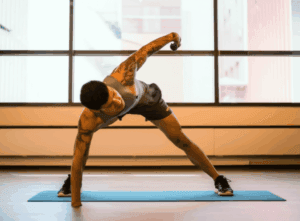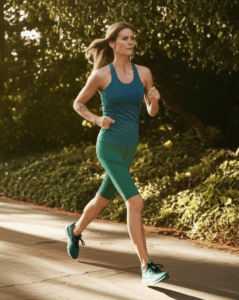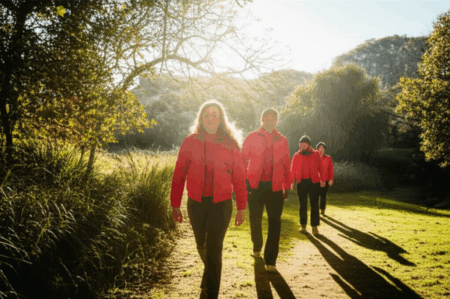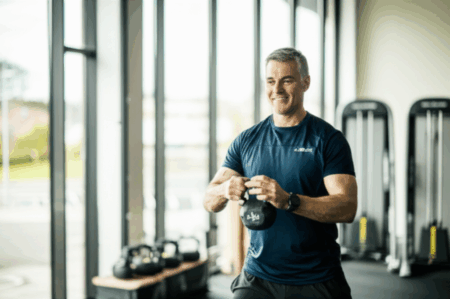Low-impact exercise is a fantastic way to build strength and stamina without putting excessive stress on your joints. It’s perfect for beginners, those recovering from injuries, older adults, or anyone looking for a gentler way to stay fit. This guide will provide you with a comprehensive routine to boost your strength and stamina through low-impact exercises.
What is Low-Impact Exercise?
Low-impact exercise involves activities that keep at least one foot on the ground at all times, reducing the stress on your joints. This doesn’t mean the workouts are easy; they can still be challenging and highly effective. The “impact” refers to the force on your joints, not the effect on your fitness.
Benefits of Low-Impact Exercise
- Joint-Friendly: Reduces stress on knees, hips, and ankles, making it ideal for people with arthritis, joint pain, or injuries.
- Improved Heart Health: Activities like walking, cycling, and swimming improve cardiovascular health.
- Builds Strength and Flexibility: Exercises like yoga and Pilates build muscle, improve flexibility, and boost balance.
- Weight Management: Effective for weight loss when paired with a healthy diet.
- Reduced Risk of Injury: Lower chance of musculoskeletal injuries compared to high-impact workouts.
- Better Sleep: Regular low-impact exercise can improve sleep quality.
- Mental Health Boosts: Exercise releases endorphins, promoting a positive mood.
- Increased Energy: Regular physical activity can increase energy levels.
- Suitable for All Ages and Fitness Levels: Easily adaptable for beginners, older adults, and those with mobility issues.
- Active Recovery: Useful for recovery days, allowing muscles to rest while increasing heart rate.
Designing Your Low-Impact Routine
To build both strength and stamina, your low-impact routine should include a mix of cardio and strength training exercises. Here’s a sample routine you can follow:
Warm-Up (5-10 minutes)
- Low-Impact Jumping Jacks: Step one foot out to the side while raising your arms overhead, alternating sides. (1 minute)
- Arm Circles: Gently rotate your arms forward and backward to warm up the shoulder muscles. (1 minute each direction)
- Leg Swings: Swing each leg forward and backward to loosen up the hip joints. (1 minute per leg)
- Torso Twists: Twist your torso gently from side to side to warm up your core. (1 minute)
- Marching in Place: Lift your knees high while marching in place to get your heart rate up. (2-3 minutes)
Cardio Exercises (20-30 minutes)
- Walking: A simple yet effective cardio exercise. Aim for a brisk pace to elevate your heart rate.
- Tempo Walk: Maintain a brisk pace for a continuous period.
- Ladder Walk: Gradually increase the incline on a treadmill, then decrease it.
- Cycling: Whether outdoors or on a stationary bike, cycling is great for lower body endurance.
- Hill Climbs: Increase the resistance or find a hill to climb for a more challenging workout.
- Swimming: A full-body workout that’s easy on the joints.
- Laps: Swim different strokes to work various muscle groups.
- Water Aerobics: Join a class for a fun and engaging workout.
- Elliptical Training: Provides a smooth, gliding motion that mimics walking without the impact.
- Rowing: Use a rowing machine for a full-body workout that’s gentle on the joints.
- Dancing: Put on some music and dance! This is a fun way to get your heart rate up.
- Low-Impact Cardio Circuit: Combine several low-impact exercises for a comprehensive workout.
- Lateral Shuffle: Shuffle from side to side, keeping low to the ground.
- Reverse Lunge Front Kick: Step back into a lunge and then kick forward.
- Squat to Jab: Perform a squat and then throw a cross-body punch.
- Standing Oblique Crunch: Bring your elbow to your knee, engaging your obliques.
Strength Training (20-30 minutes)
- Bodyweight Squats: Stand with feet shoulder-width apart and lower your hips as if sitting in a chair. (2-3 sets of 10-12 reps)
- Wall Sit: Lean against a wall with your knees bent at a 90-degree angle and hold. (2-3 sets, hold for 30-60 seconds)
- Reverse Lunge: Step backward with one leg and lower your body until both knees are bent at 90 degrees. (2-3 sets of 10-12 reps per leg)
- Glute Bridge: Lie on your back with knees bent and feet flat on the floor. Lift your hips off the ground, squeezing your glutes. (2-3 sets of 12-15 reps)
- Plank: Hold a plank position, engaging your core. (2-3 sets, hold for 30-60 seconds)
- Side-Lying Leg Raise: Lie on your side and lift your top leg, keeping it straight. (2-3 sets of 12-15 reps per leg)
- Dumbbell Chest Press: Lie on your back with knees bent and feet flat on the floor. Hold a dumbbell in each hand and press them up towards the ceiling. (2-3 sets of 10-12 reps)
- Dumbbell Bicep Curl: Stand with feet shoulder-width apart and hold a dumbbell in each hand. Curl the dumbbells up towards your shoulders, keeping your elbows still. (2-3 sets of 10-12 reps)
- Wall Push-Ups: Stand facing a wall, place your hands on the wall, and perform a push-up. (2-3 sets of 10-12 reps)
- Resistance Band Exercises: Use resistance bands for rows, bicep curls, and leg extensions to add intensity.
Cool-Down (5-10 minutes)
- Stretching: Hold each stretch for 20-30 seconds.
- Hamstring Stretch: Sit on the floor with one leg extended and reach towards your toes.
- Quad Stretch: Stand and pull one foot towards your buttock, holding the stretch.
- Calf Stretch: Lean against a wall with one leg extended behind you, heel on the ground.
- Shoulder Stretch: Reach one arm across your body and gently pull it closer with the opposite arm.
- Triceps Stretch: Reach one arm overhead and bend it behind your head, gently pulling your elbow with the opposite hand.
Sample Weekly Routine
Here’s a sample weekly routine that incorporates the above exercises:
- Monday: Cardio (Walking, Cycling, or Elliptical) – 30 minutes
- Tuesday: Strength Training (Bodyweight and Dumbbell Exercises) – 30 minutes
- Wednesday: Active Recovery (Yoga or Pilates) – 30 minutes
- Thursday: Cardio (Swimming or Rowing) – 30 minutes
- Friday: Strength Training (Resistance Band Exercises) – 30 minutes
- Saturday: Rest or Light Activity (Gentle walk or stretching)
- Sunday: Long Walk or Bike Ride – 45-60 minutes
Tips for Success
- Start Slowly: Begin with shorter workouts and gradually increase the duration and intensity.
- Listen to Your Body: Rest when needed and don’t push through pain.
- Stay Consistent: Aim for at least 3-5 workouts per week.
- Proper Form: Focus on maintaining good form to prevent injuries.
- Stay Hydrated: Drink plenty of water before, during, and after your workouts.
- Make it Enjoyable: Choose activities you enjoy to stay motivated.
- Warm-Up and Cool-Down: Always warm up before exercising and cool down afterward.
- Mix It Up: Vary your routine to keep things interesting and challenge different muscle groups.
- Set Realistic Goals: Set achievable goals to track your progress and stay motivated.
Adapting Exercises
Many traditional exercises can be modified to be low impact:
- Jumping Jacks: Instead of jumping, step one leg out to the side at a time.
- Burpees: Skip the jump and step your feet back and forward instead.
- Mountain Climbers: Perform them slowly, keeping your feet on the ground.
- Lunges: Avoid jumping and step back gently into the lunge.
Conclusion
A low-impact routine is an excellent way to build strength and stamina while being kind to your joints. By incorporating a mix of cardio and strength training exercises, you can achieve your fitness goals safely and effectively. Remember to listen to your body, stay consistent, and enjoy the process!







